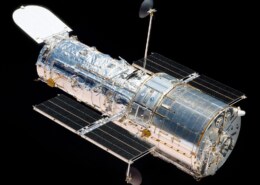A satellite consists of several critical subsystems that work together to ensure its successful operation in space: 1. **Power Subsystem**: Provides the necessary electrical power through solar panels and batteries. 2. **Communication Subsystem**: Enables communication with ground stations using antRead more
A satellite consists of several critical subsystems that work together to ensure its successful operation in space:
1. **Power Subsystem**: Provides the necessary electrical power through solar panels and batteries.
2. **Communication Subsystem**: Enables communication with ground stations using antennas and transponders.
3. **Telemetry, Tracking, and Command (TT&C) Subsystem**: Monitors the satellite’s health and transmits data back to Earth.
4. **Attitude and Orbit Control Subsystem (AOCS)**: Maintains the satellite’s orientation and corrects its orbit using thrusters and gyroscopes.
5. **Thermal Control Subsystem**: Regulates the satellite’s temperature using insulation, radiators, and heaters.
6. **Payload Subsystem**: The mission-specific equipment, such as cameras, sensors, or transponders, depending on the satellite’s purpose.
7. **Structural Subsystem**: Provides the mechanical support for all components, ensuring structural integrity during launch and operation.
The terms **satellite** and **rocket** are not the same. A satellite is an object placed into orbit around the Earth or another celestial body to perform specific functions like communication, weather monitoring, or scientific observation. A rocket, on the other hand, is a vehicle designed to propel payloads, such as satellites, into space using thrust generated by expelling exhaust gases. Essentially, a rocket is the delivery system that carries satellites into their designated orbits, while the satellite is the payload that operates in space once deployed.
See less

Curiosity